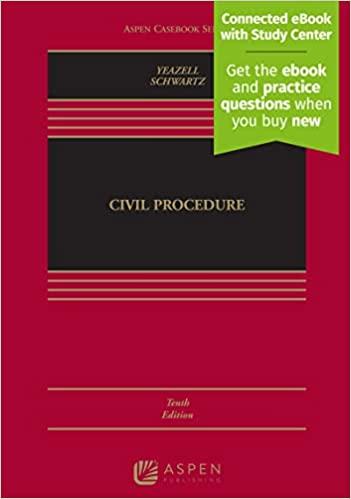Question
3/Many people have heard of the 1992 McDonald's hot coffee case (Liebeck v McDonald's Restaurants, Inc.). It involved a woman in the passenger seat of
3/Many people have heard of the 1992 McDonald's "hot coffee" case (Liebeck v McDonald's Restaurants, Inc.). It involved a woman in the passenger seat of a car that used a drive-through window at a McDonald's in Albuquerque, New Mexico. She placed a cup of coffee between her thighs when exiting the restaurant and when the driver accelerated, it spilled on her, causing third degree burns. The coffee was supposedly 190 degrees, which was alleged to be too hot. A jury awarded the plaintiff nearly $3 million.
According to the National Coffee Association, "the brewing temperature of the water used is very important. It should be between 195 F (91 C) and 205 F (96 C). The closer to 205 F (96 C) the better. Boiling water (212 F - 100 C) should never be used, as it will burn the coffee. Water that is less than 195 F (91 C) will not extract properly."
Is the problem that the coffee was served in a drive through window or was the coffee itself "too hot" when served as alleged. Should people realize coffee is hot? Isn't this like burning your fingers with matches or cutting yourself with a razor blade? Was the product "defective"? Explain your answers.
Step by Step Solution
There are 3 Steps involved in it
Step: 1

Get Instant Access to Expert-Tailored Solutions
See step-by-step solutions with expert insights and AI powered tools for academic success
Step: 2

Step: 3

Ace Your Homework with AI
Get the answers you need in no time with our AI-driven, step-by-step assistance
Get Started


